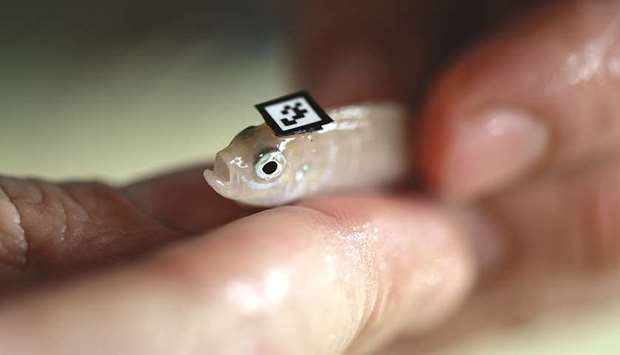Alex Jordan thinks the fish are doing more than just milling about – the biologist from the University of Konstanz in Germany is researching how they behave in shoals – or to be more precise, how the behaviour of the group influences the individual and vice versa.
“With the help of new technology, we’re able to research collective behaviour anew,” says Jordan.
Before, scientists primarily examined the behaviour of individuals, simply because it wasn’t possible, or was very laborious, to study a whole group at the same time.
“Before, it was always ‘one diver, one fish,’” Jordan says. “Now we have the technology to, for example, examine the movement of animals in groups by using multiple cameras.”
In 2016, a top research centre dedicated to swarm and collective behaviour was created at Konstanz University, with computer graphics and data analysis experts called in, as well as behaviour biologists.
Using analysis and visualisation of the movement data from big groups of animals, the scientists want to create new approaches towards the research of swarm behaviour and group dynamics among animals.
In one experiment, for example, Jordan and his colleagues are examining how groups pass on information among themselves.
It works like this: One of the cichlids is taught to differentiate between a yellow and a blue light – when one colour is on, there is food. When the other colour is on, there’s no food.
When the fish returns to the group, the other can learn from him by gradually copying his behaviour. The scientists recognise the first fish because he’s carrying a small plate with a barcode on his head.
As they observed the fish, the scientists noticed something interesting: When that fish separated himself at the beginning of the experiment and swam to the yellow light, against the tide of other fish, because he knew it meant food, his behaviour received more notice from the other fish than when it was a more dominant fish.
“The dominant fish swim about a lot anyway,” says Jordan. So at first, the other fish don’t notice any difference in their behaviour.
But what use is such information?
Jens Krause, from the Berlin-based Leibniz-Institute of Freshwater Ecology and Inland Fisheries, has one example.
His team has compared models of how fish shoals behave with group behaviour in humans. “We looked, for example, at how animals moved in the group,” he says. The team discovered that it takes only a few animals with a directional preference to steer an entire group.
The scientists tested their theory out on groups of up to 200 people.
“Big groups of people can also be steered by just a few who know where they’re going,” he says.
Swarm behaviour research also provides valuable insights into decision-making processes.
“We looked at how doctors diagnose breast and skin cancers,” Krause says. In the second step, the scientists looked at how their knowledge could be improved with collective intelligence methods.
The result: If you compare the diagnoses of at least three doctors, the result will be better than that of the best doctor in the group.
From that, the scientists concluded that collective decision-making is often better than that of the individual. – DPA

